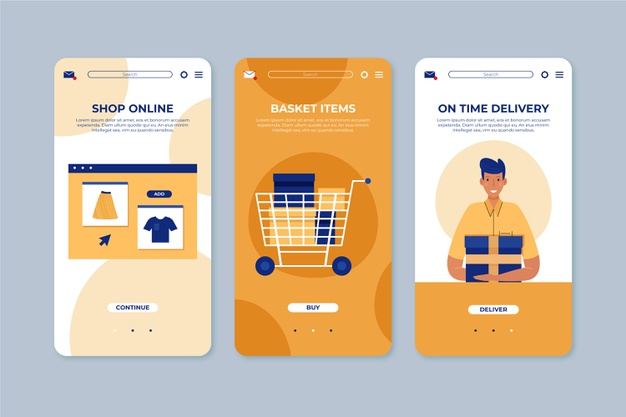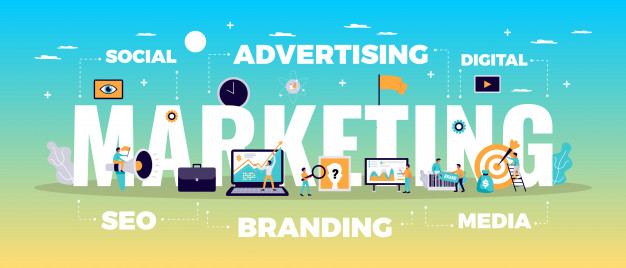To stay competitive in the web design sector, the start of the fourth quarter always heralds a re-evaluation of existing strategies and the search for novel ones.
B2B buyer behavior continues to evolve at dizzying speeds, fueled by a slew of new technology and insights. In this ever-changing landscape, B2B marketers are understandably challenged to re-calibrate their lead generation methods.
Consumers have become increasingly educated because of the explosion of content addressing consumer concerns at every stage of the buying process. Furthermore, advances in technology have raised consumer expectations for customer service.
According to one study, customer experience has eclipsed price and product as the essential brand differentiator, especially if you want to generate more web design leads.
Some B2B companies improve their conversion rates, while others are stuck in their ways, maybe unsure how to change things.
However, 61% of organizations think lead generation (like generating SEO leads, social media marketing leads, and Pay-Per-Click management leads) is their most challenging marketing obstacle. There are many free lead generation strategies available, but only a few will help you maximize your return on investment. Here are some ways for generating B2B leads that will help you step up your game.
Produce High-Quality, Long-Lasting Content
Because content is the money of the internet nowadays, you should publish content regularly. This not only improves your professional reputation but also broadens your reach and exposure. We would advise against creating content for the sake of having content. You want your content to add value to your audience rather than merely make your brand appear suitable.
You gain your target audience’s allegiance by publishing valuable content informing, educating, and entertaining them.
Once you’ve earned their trust, it’s much easier to convert leads. The frequency with which you post is also crucial. Publishing high-quality blog entries regularly demonstrate to your target audience that you are willing to go to great lengths to offer them valuable content that solves their needs.
According to a Hubspot study, companies that publish 16 or more blog articles per month get 4.5 times more leads than those who write only 0-4 posts per month. In addition, according to the report, content is relied on by 47% of B2B buyers for research and purchasing decisions.
More importantly, before contacting a salesperson, B2B buyers absorb at least three to five pieces of related content. Therefore, take advantage of this data by providing more material more frequently to meet your audience’s information needs.
Finally, while moment marketing is a terrific method to stay relevant or go viral for a limited time, coming up with evergreen niche subjects is a surefire approach to be noticed no matter where your potential clients are in the sales funnel, if you want to get more web design leads.
Evergreen content complements your SEO approach by helping you to stay current in search results. In addition, evergreen content is useful, instructive, and shareable, which are all characteristics that people value in high-quality material. Furthermore, it will never go out of style.
Use Strategic, Gated Content
Not every marketer is sure if they should restrict their content or not. However, this remains one of the most efficient methods for attracting and identifying leads interested in your company.
Gated content, when done correctly, can increase leads and conversions. For example, trading Strategy Guides, a finance and trade website, used a content locking script to attract nearly 11,000 targeted members to their email list in just one month. In addition, according to Unbounce’s gated content statistics, more campaigns had conversion rates between 19 and 45 percent.
If you’ve already established a library of content that you know your audience will love, gated content is a good idea. In this manner, dedicated readers won’t be hesitant to give you their names and email addresses in exchange for a chance to read what you’ve written. This strategy may be useful overall for getting reputation management leads and app development leads as well.
Exchange Content for Email Addresses or Personal Information
Please make use of content offers that require consumers to provide contact information to access them. This will assist you in rapidly expanding your contact list and initiating the lead creation process. In addition, offer various materials to your audiences, such as eBooks, guides, whitepapers, checklists, tutorials, tools, and everything else you can think of.
If possible, use other opt-in offers such as newsletters and webinars. Make sure that everything you create is genuinely valuable in teaching, issue solving, or enjoyment.
If you wish to collect your visitors’ contact information, you’ll need to use forms. The ideal approach is to keep the number of required fields to a minimum and only collect the data that your sales team requires.
You’ll be frightening off potential regular leads if your form is overly demanding.
Increase The Number of Touch Points That Are Personalized
One-size-fits-all marketing is a thing of the past. Instead, users are yearning for that human touch that helps them form stronger bonds with businesses and form more meaningful interactions.
In a survey of 7,000 consumers conducted by SalesForce, 57% of respondents stated they would disclose their data in exchange for tailored offers, 53 percent for personalized product recommendations, and 52 percent for customized shopping experiences.
As a result, make your content marketing efforts more personalized. There’s no need to use first names or stalk people online. However, deliver tailored material based on your audience’s content consumption habits.
Create Communities and Personalize Social Media Interactions
Social media is no longer just another way to distribute and promote your content. Businesses can benefit from social media.
This is your time to interact with the people in your audience. The average person has 7.6 active social media accounts and uses them for more than 2 hours every day. So take advantage of the situation.
Maintain an active and consistent presence on the platforms you choose to use. For example, you should use a t least three or four different social media networks for advertising your brand. The ones you pick should be based on who your target demographic is and where they frequent.
t least three or four different social media networks for advertising your brand. The ones you pick should be based on who your target demographic is and where they frequent.
You can start a Facebook group where you can have regular talks about current events in your field. Use hashtags to connect with like-minded people or specific causes or topics on Twitter and Instagram.
LinkedIn marketing is crucial because it is the most popular medium for communicating with B2B prospects and informing them about your company. As a B2B lead generation network, it has a lot of traction. LinkedIn generates more than 80% of B2B leads, indicating that CXOs need to beef up their social media presence.
Simply engaging with potential clients on social media channels isn’t enough anymore, with every other marketer doing so. Instead, send individualized connection requests and messages to cut through the noise of spam and irrelevant marketing to reaffirm the “people” behind your brand. Again, being an engaged member of your community yields the best benefits.
Improve Your Landing Pages and Calls-To-Actions
Did you realize that a lot of landing pages have many offers on them? If this describes your company, it’s time to reconsider your lead conversion approach. According to marketing experiments, multiple offers on a single page can reduce conversion rates by up to 266 percent.
Addressing SEO best practices, focusing your content on the value of your product, optimizing your signup form for engagement, and establishing a customer testimonial program are all part of optimizing your landing pages for lead creation.
These tactics will boost the possibility of conversions by making your offer more appealing to your visitors.
To eliminate distractions, focus on a single goal for each landing page and be explicit with your messaging in your Call-To-Action (CTA). Make sure your landing pages and CTAs are persuasive if you want to convert your visitors into leads. Make typing in their information on your forms an entertaining, simple, and natural experience for them.
Whether or not someone clicks through to your landing page is primarily determined by the CTA buttons you choose. Make sure your buttons have the right colors, forms, sizes, and placement, as well as any other attribute that affects how people perceive them. To boost your conversion rates, A/B tests your CTA buttons to see which combinations work best.
Keep Track of Your Website Visitors’ Actions.
Analyzing your website visitors’ actions on your site is a great approach to figure out why they aren’t converting. For example, you can record user sessions and plot heatmaps on your site’s most-clicked buttons using tools like Hotjar or Mouseflow.
This stage, according to many Conversion Rate Optimization (CRO) specialists, is one of the quickest ways to find the “whys” in your process:
– Why aren’t they making the switch?
– Why aren’t they completing my forms?
– Why are they so enthusiastic about this website?
You may correct a problem or apply more of the same method to your other pages from here. This is also useful for A/B testing.
Encourage Customer Reviews on The Internet
According to RevLocal, 92% of buyers read online reviews before purchasing a product or service.
It’s possible that not having a testimonials page or the option of a review on your website is hurting your chances of being contacted. Make it easy for your clients and customers to leave a review and have it posted on your website.
Consumer confidence is built through reviews, which improves your local search performance and, as a result, conversions. Consumers are more inclined to spend 31 percent more on firms with excellent evaluations, according to the RevLocal survey.
Increase Your Online Visibility
Your brand’s persona isn’t just restricted to your website and social media accounts.
Expand your reach by guest blogging, being interviewed, or answering questions on Quora.com or other industry-specific Q&A sites or forums to increase your credibility.
This is a fantastic method to establish your personal brand’s authority while also putting your company’s name in front of people looking for relevant solutions to their problems.
If you answer relevant questions in your sector on Quora, you can get thousands of leads. For example, developing your brand as a thought leader can help you raise brand awareness and assist first-time customers in gaining trust faster.
Target Your Competitors’ Audience with Gmail Ads
According to SuperOffice’s State of B2B Email Marketing survey, email is still the most popular lead generation channel, with 77 percent of B2B marketers using it to generate leads.
In B2B, attracting the attention of your competitors’ customers has a lot of value. Gmail advertising allows you to target people who have received emails from your competition in your Google Ads campaign. Doesn’t that sound devious? It is, but it is also quite effective. It provides you with direct access to those who are already familiar with your service’s nature.
Industry Updates: Web Design Industry
What will be the size of the Web Design Services market in the United States in 2021?
In 2021, the Web Design Services business will have a market size of 40.8 billion dollars, as measured by revenue.
What will be the industry’s growth rate in 2021 in the United States?
In 2021, the size of the Web Design Services market is estimated to grow by 3.1 percent.
Has the US Web Design Services industry increased or shrunk in the last five years?
Between 2016 and 2021, the Web Design Services industry in the United States grew at a rate of 4.4 percent per year on average.
What has been the Web Design Services industry’s performance compared to other US industries over the last five years?
In the United States, the Web Design Services industry grew faster than the entire economy.
How has the US Web Design Services industry fared in comparison to the US Technology sector?
In the United States, the Web Design Services industry grew at a greater rate than the Technology sector.
What factors influence the growth of the US Web Design Services industry?
High competition is the key negative element influencing this industry, whereas an increasing life cycle stage is the primary positive factor.
What is the most promising area for growth in the US Web Design Services industry?
New enterprises frequently use industry services to build up a website. Websites are becoming increasingly common for businesses to communicate with clients and generate sales in an increasingly digital age. In addition, retailers frequently use these services to create online storefronts with security features and shopping carts. From 2019 onwards, the number of firms is likely to increase, creating an opportunity for the industry.






